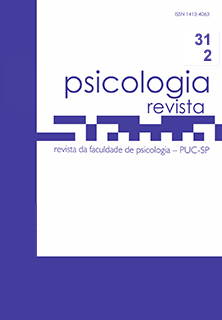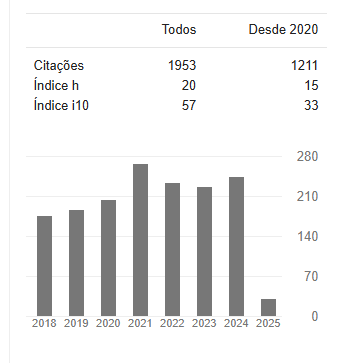Changing implicit racial bias in black and white adults
an assessment of stimulus equivalence procedure
DOI:
https://doi.org/10.23925/2594-3871.2022v31i2p412-431Keywords:
behavior analysis, stimulus equivalence, implicit racial bias, racial relationsAbstract
As a science, behavior analysis has technology to study cultural practices related to racial issues. The purpose of this study was to assess the effects produced by a procedure aimed to reduce negative racial bias towards black people. Seventeen black and white participants were selected after fulfilling a self-declaration questionnaire and being assessed by Implicit Relational Assessment Procedure (IRAP), in order to set a baseline. Then, three relations were trained using matching-to-sample (MTS): (a) thumbs/abstract figures; (b) abstract figures/ black people and abstract figures; and (c) simultaneous prior relations. Symmetry, transitivity and equivalence tests were performed at the end of each training, and IRAP was used again to assess changes after the procedure. Results indicated that participants were not negatively biased towards black people and, after the procedure, only white participants showed significant change. We recommended future studies to test the effects of the researcher’s characteristics as well as other ways to detect implicit racial bias.
References
Andery, M. A., & Sério, T. M. (1997). The bell curve: What has radical behaviorism to say about it? Behavior and Social Issues, 7(1), 69–82.
Barnes-Holmes, D., Barnes-Holmes, Y., Power, P., Hayden, E., Milne, R., & Stewart, I. (2006). Do you know what you really believe? Developing the Implicit Relational Assessment Procedure (IRAP) as a direct measure of implicit beliefs. The Irish Psychologist, 32(7), 169–177.
Bradley, M., & Lang, P. J. (1994). Measuring emotion: The Self-Assessment Manikin and the Semantic Differential. Journal of Behavior Therapy and Experimental Psychiatric, 25(1), 49–59. https://doi.org/10.1016/0005-7916(94)90063-9
Carvalho, M. P. (2010). Resistência à mudança de atitude preconceituosa racial avaliada pelo paradigma de equivalência de estímulos (Dissertação de mestrado). Universidade Federal de São Carlos, São Carlos, SP, Brasil.
Gonzalez, A. M., Steele, J. R., & Baron, A. S. (2017). Reducing children’s implicit racial bias through exposure to positive out‐group exemplars. Child Development, 88(1), 123-130. doi:10.1111/cdev.1258
Greenwald, A. G., McGhee, D. E., & Schwartz, J. L. K. (1998). Measuring individual differences in implicit cognition: The implicit association test. Journal of Personality and Social Psychology, 74, 1464–1480. https://doi.org/10.1037/0022-3514.74.6.1464
Holland, J. G. (1979). Comportamentalismo: Parte do problema ou parte da solução? Análise Psicológica, 2, 317–326.
Lai, C. K., Marini, M., Lehr, S. A., Cerruti, C., Shin, J. E. L., Joy-Gaba, J. A. . . . Nosek, B. A. (2014). Reducing implicit racial preferences: I. A comparative investigation of 17 interventions. Journal of Experimental Psychology: General, 143(4),765–1785. DOI: 10.1037/a0036260
Mizael, T. M. (2015). Estabelecimento de classes de estímulos equivalentes com estímulos significativos: Investigando a atitude racial preconceituosa (Dissertação de mestrado). Universidade Federal de São Carlos, São Carlos, SP, Brasil.
Ribeiro, D. (2016). Feminismo negro para um novo marco civilizatório. Revista internacional de direitos humanos, 13(24), 99-104.
Rose, M. C., Brodsky, J. E., Che, E. S., & Brooks, P. J. (2021). Teaching About Systemic Ethical Misconduct Increases Awareness of Ethical Principles: A Replication and Extension of Grose-Fifer’s (2017) Tuskegee Role-Play Activity. Teaching of Psychology, 00986283211015981.
Rudman, L. A., & Saud, L. H. (2020). Justifying social inequalities: The role of social Darwinism. Personality and Social Psychology Bulletin, 46(7), 1139-1155.
Skinner, B. F. (2003). Ciência e comportamento humano (J. C. Todorov & R. Azzi, Trads.; 11. ed.) São Paulo: Martins Fontes. (Trabalho original publicado em 1953)
Downloads
Published
How to Cite
Issue
Section
License
Copyright (c) 2022 Pedro Henrique Jardim, Paula Suzana Gioia

This work is licensed under a Creative Commons Attribution 4.0 International License.














